Stories
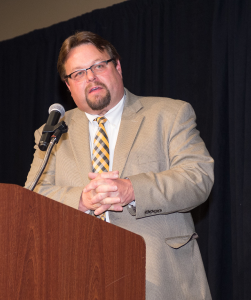
May 4, 2020
Loyd Wilson Honored With Past President Award by CAFNR Alumni Association
Loyd Wilson, who received a bachelor’s in animal sciences from CAFNR in 1986, has been honored with the 2020 Past President Award from the CAFNR Alumni Association. Wilson, who also received an MPA in Public Administration from Mizzou in 2005, served as president of the Association over the past year. He is director of administration for the Missouri Public Service Commission and has served as deputy director for the Missouri Department of Agriculture. “Loyd is a highly involved member of the Board of Directors currently serving as Immediate Past President as his 7th year on the Board. Loyd is extremely knowledgeable and…
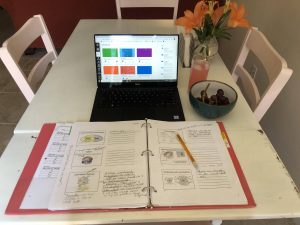
April 28, 2020
A Different Look
In mid-March, the University of Missouri System announced that its four universities would conduct remote courses for the reminder of the spring 2020 semester due to the COVID-19 pandemic. Most students traveled home and have been finishing their coursework remotely. Students in the College of Agriculture, Food and Natural Resources (CAFNR) don’t only receive a degree during their time in Columbia – they get the entire CAFNR experience. That experience includes access to award-winning advisors and teachers; research opportunities with internationally renowned scientists; study abroad options tailored to degree programs and in more than a dozen countries; career expos bringing…
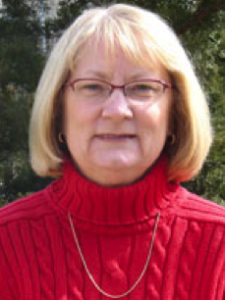
April 21, 2020
Anita Carter Receives Chancellor’s Outstanding Staff Award
Anita Carter, program/project support coordinator in the School of Natural Resources, was awarded the Chancellor’s Outstanding Staff Award in the Part-Time/Temporary category. This award is presented to a staff member who exemplifies the university’s values through temporary or part-time employment and consistently display characteristics that are valued and appreciated by their coworkers. They lead by example, motivate those around them, demonstrate compassion and bring innovative ideas to their teams.
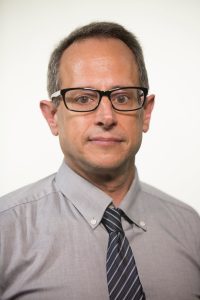
April 21, 2020
Tony Lupo receives SEC 2020 Faculty Achievement Award
Tony Lupo, professor of atmospheric science, has received the SEC 2020 Faculty Achievement Award. The recognition is given out to one faculty member from each school once a year. The SEC then awards one of those candidates as SEC professor of the year. First presented in 2012 and selected by the SEC provosts, these awards honor one individual from each SEC member university who has excelled in teaching – particularly at the undergraduate level – and research.
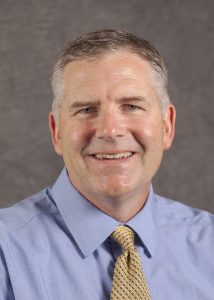
April 21, 2020
Tom Spencer Appointed to Position with Office of Research and Economic Development
Tom Spencer, Curators Distinguished Professor of Animal Sciences, has accepted a part-time appointment as the Associate Vice Chancellor for Research and Strategic Initiatives in the Biomedical and Agricultural Sciences. In this capacity, Spencer will work with the Vice Chancellor for Research and Economic Development, as well as the Provost, Deans and Center Directors, to shape and enhance the current research centers, develop strategies for new strategic centers of excellence in research and creative works, support the Research Core Facilities, coordinate among departments and colleges the recruitment of faculty in strategic research thrusts and plan and drive new strategic initiatives that will…
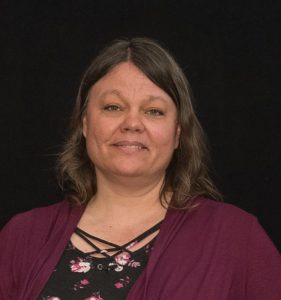
April 21, 2020
Michelle Brooks Receives Chancellor’s Outstanding Staff Award
Michelle Brooks, greenhouse coordinator in plant sciences, was awarded the Chancellor’s Outstanding Staff Award in the Technical/Paraprofessional category. This award is presented to an individual who best reflects honor upon the University and the community through a combination of job performance, job-related personal qualities, relationship with their associates, and the ability to relate their work to the missions and values of the University.
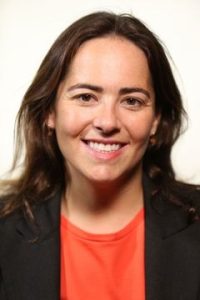
April 13, 2020
Robin Rotman Receives Faculty Incentive Grant
Robin Rotman, assistant professor in the School of Natural Resources, has been selected as one of the Spring 2020 Faculty Incentive Grant recipients. The Mizzou Alumni Association (MAA) supports the development of faculty through its Dr. Richard Wallace Faculty Incentive Grants program. Since launching in 1994, MAA has provided start-up funds to more than 300 faculty members for the initiation of research or professional development projects.
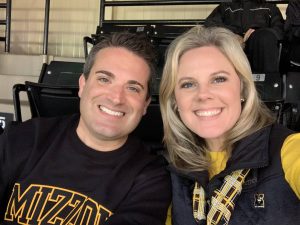
April 13, 2020
Mizzou Made Meteorologists
The University of Missouri College of Agriculture, Food and Natural Resources’ atmospheric science program has trained and prepared meteorologists who are now spread throughout the United States, providing timely weather and climate information for the communities they serve. Two of those meteorologists serve one of the country’s largest cities – Nashville, Tennessee. Katy Morgan and Henry Rothenberg were classmates during their time at Mizzou and now serve as meteorologists for FOX 17 and News Channel 5, respectively. Both graduated from MU in 2006. “As students, Katy and Henry were both very passionate about meteorology,” said Pat Market, interim director of…
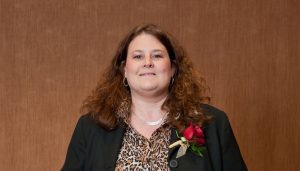
April 10, 2020
Q&A With Christa Smith
What are your job duties/job responsibilities in the College of Agriculture, Food and Natural Resources? I am the executive assistant to the division director in the Division Plant Sciences. I support Bruce Barrett with his calendar, travel, meeting minutes and work with faculty and MyVita, which is a faculty activity reporting system. I’m the liaison for all academics in plant sciences, so I work with the registrar’s office managing the course offerings and MyZou, and the graduate school for all issues related to the graduate students. I also handle phone inquiries that come into the division and coordinate web page…
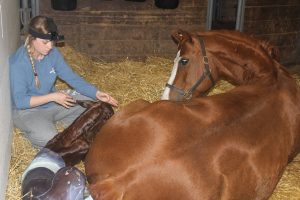
April 9, 2020
Being Adaptable
Part of CAFNR’s mission is preparing students for a complex, interconnected planet. To thrive in tomorrow’s society, students must be adaptable learners and informed citizens to make purposeful contributions in the world. CAFNR provides these opportunities through exceptional experiential and practical learning experiences based on cutting-edge science and through communicating and engaging with people and the community. Students in CAFNR not only get a degree while in Columbia – they get the entire CAFNR experience. Students gain that experience through award-winning advisors and teachers, research opportunities with internationally renowned scientists, study abroad options tailored to degree programs and in more…